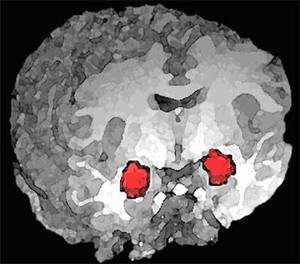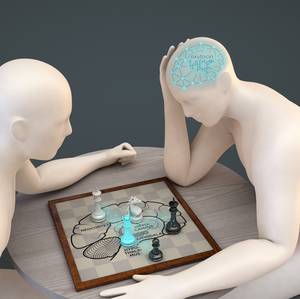Without fear
2025/04/01 Leyre Echeazarra Escudero - EHUko Farmazia Fakultateko irakaslea eta ikertzailea. Fisiologia saila. Iturria: Elhuyar aldizkaria
“Once upon a time there was a man who had two sons. The kids were completely different. Peter, the eldest, was a smart and responsible boy, but very frightened. His younger brother, Jon, was never afraid of anything. That's why everyone in town called him "Jon Fearless." Jon was not afraid of storms, strange sounds, or tales of monsters. Fear did not exist for him” (Adaptation of the Brothers Grimm’s novel Jon Ikargabe, 1812).
Unlike Jon, most of us have probably felt fear at some point. What is fear? Where exactly is it? Are there people who are not afraid? Can we control it?
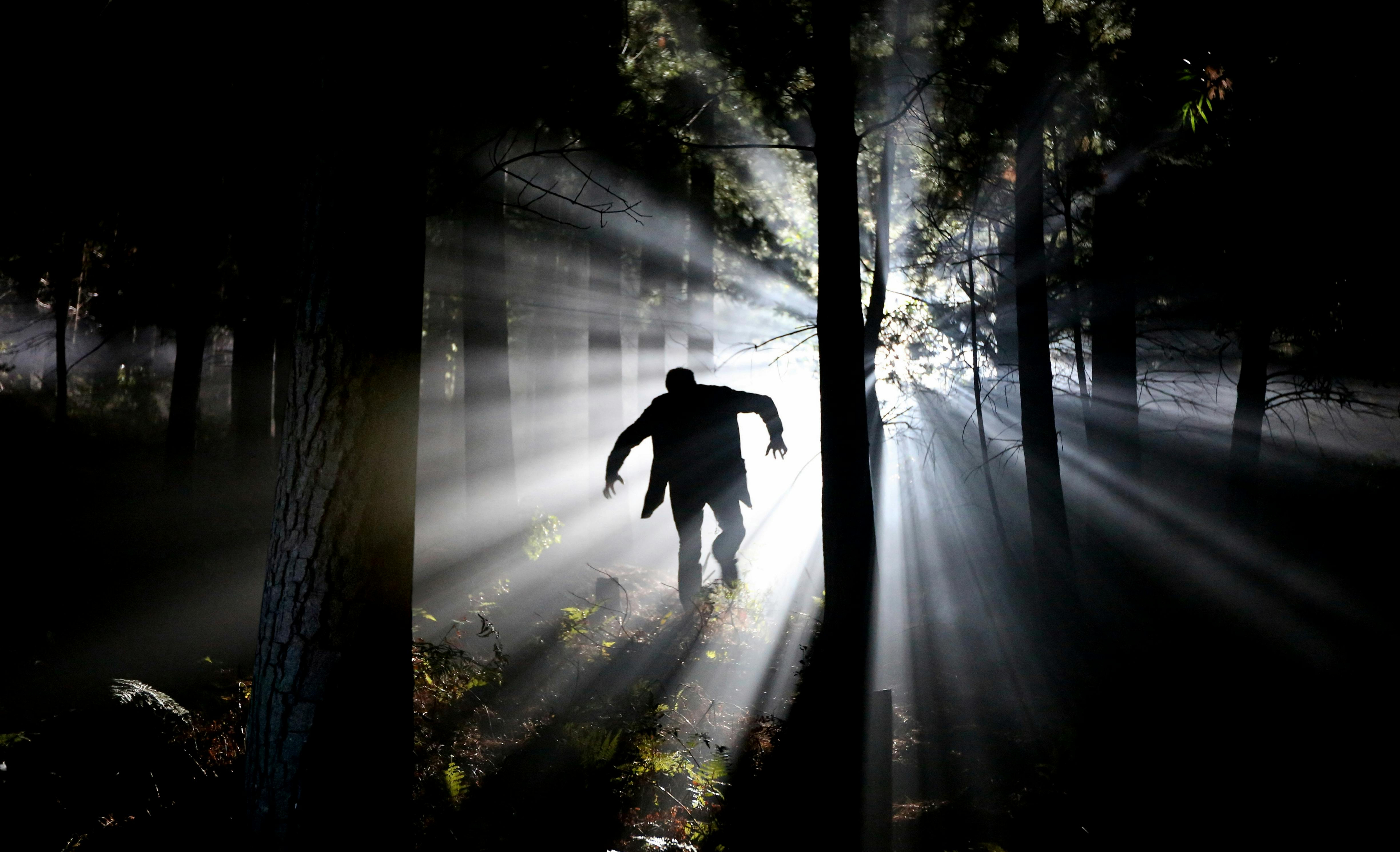
The Dictionary of the Basque Language defines fear as: "A state of nervousness that arises in the face of both real and imaginary danger." Fear is a basic emotion that we share with many animals and plays a fundamental role: survival. We need to feel fear because fear protects us from danger.
Imagine that you walk through a forest and suddenly hear the noise. Turn around, and you see a strange shadow behind some branches. Even before you understand what it is, your brain has sent information to the organism in order to prepare you for this potential danger, both in combat and in flight. Physiologically, adrenaline is released and causes an increase in the activity of the sympathetic nervous system. This results in physiological changes such as increased heart rate, blood pressure, and breathing rate, increased sweating, peripheral vessel constriction, pupil dilation, and increased defensive reflexes (such as blinking). Fear leads us to avoid situations that can put our lives at risk and, a priori, it is an unpleasant emotion.
However, we look for horror experiences (such as horror movies or dizzying rollercoasters) that cause physical hyperactivation and a sense of euphoria. On the one hand, adrenaline makes us feel more active and alive. On the other hand, after the physiological excitement of fear, it seems that any positive emotion we feel will increase (for example, laughs with friends after watching a horror movie). In fact, when a situation awakens our fear and then we detect that it has not been a real danger, the organism releases dopamine, a neurotransmitter involved in the sensation of pleasure.
Is fear a congenital or learned emotion?
Surely some will think that, with fear being such an important emotion for our survival, it will have to be innate. However, we are not all afraid of the same things or situations, either at the same age or with the same intensity. So, is fear innate or learned?
To answer this question, in 1919 psychologist James Watson and collaborator Rosalie Rayner, both from Johns Hopkins University, conducted an experiment. They investigated an eleven-month-old boy named Albert, who was very quiet. The child was allowed to play with a laboratory rat. The rat was not afraid of him at all. Because scientists wanted to know if fear was a conditioned process, they could make the child they investigated afraid of the rat. To do this, they made a lot of noise over and over while playing with the rat Albert. That loud noise, yes, scared the baby. After repeating this process several times, Albert began to fear the rat even without this annoying noise. Not only that, the child began to fear other furry animals, such as rabbits and dogs. Scientists managed to create "conditioned fear" in the child.
To a large extent, most of the fears we have throughout our lives are caused by learning, but some fears also seem to be innate, such as those caused by loud noises, darkness, loneliness, or storms. These innate fears are related to the survival of the species and have been important in natural selection. In fact, in the presence of certain stimuli, primitive human beings who tended to feel fear avoided these situations, survived more easily and managed to transmit genes.
Where is the fear? The circuit of fear.
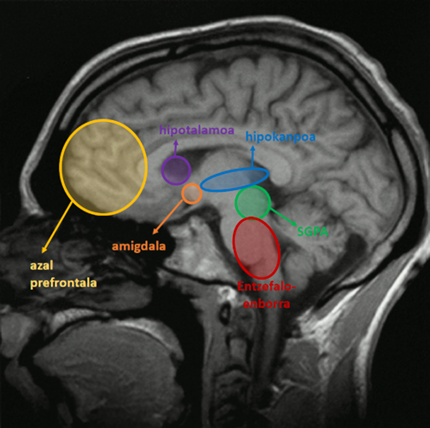
The main organ of fear processing is the amygdala, a small almond shaped brain structure located in the temporal lobe of the brain (actually, there are two structures on either side of the midline of the brain). This brain structure is made up of several nuclei, each of which is involved in the processing of fear in a different way. For example, the lateral amygdala is a center for collecting and integrating information about the stimuli associated with fear, while the central amygdala is responsible for the expression of fear. In addition, it is actually capable of extracting threat information from the visual scene (e.g., a facial expression of someone else's fear) even before receiving fine visual information from the neocortex. This produces a very rapid response without the involvement of the superior brain structures.
However, the amygdala is not the only brain area involved in fear; rather, it interacts very interactively with the rest of the brain, both receiving and sending signals (Figure 2). For example, the hippocampus is involved in memory, and it is essential to remember what things affect us to fear. Another region is the ventral prefrontal cortex, located in the front part of the brain, whose function is to modulate fear responses. The hypothalamus is involved in the activation of the autonomic nervous system and therefore in the appearance of physiological responses induced by fear. The brainstem is also activated to increase the reflexes of combat, stagnation, and avoidance, as well as the trigeminal nerve and facial nerves that cause facial expressions of fear. Similarly, periaqueductal grey matter (SGPA) appears to be important. This area is responsible for how we react to danger by activating or stopping the defensive response (fight or flight).
People who don't know fear
The text begins with an excerpt from the story of Jon Ikargabe, who tells the story of a child who is unable to feel fear. Although Jon is a literary character, there are a few people like him in real life.
Urbach-Wiethe syndrome is a genetic disorder that some people suffer from, discovered in 1929 by dermatologist Erich Urbach and otolaryngologist Camillo Wiethe. In this disease, the structure of the brain amygdala is gradually destroyed by calcium accumulation, resulting in its loss of function. In addition to causing confusion in the processing of fear, other alterations appear. For example, small yellowish or grayish elevations appear on the skin, especially on the face and eyelids, voice changes occur due to thickening of the vocal cords and tongue, and sometimes epilepsy occurs due to inflammation of some areas of the brain.
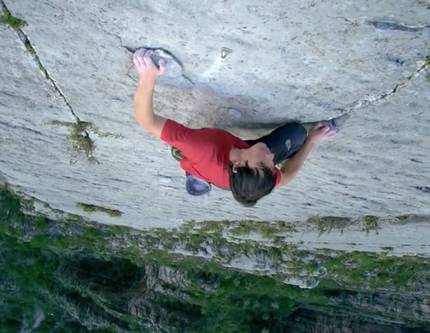
Apart from rare diseases, we all know that there are people who are particularly brave. One of these people is Alex Honnold, the best climber in the world in the discipline "pure integral" (Figure 3). In this risky sport, the climber advances without any safety along the vertical wall. Apparently, if this activity is very dangerous in the male, Alex doesn't feel any fear. Scientists thought his brain wasn't working properly. However, Alex was able to make the fine moves necessary to climb very well. It was clear that his behavior was special, that he was always looking for extreme and dangerous experiences, but at the same time with very good mental control. That’s why, in 2016, Jane E. Neuroscientist Joseph (from the University of Medicine in South Carolina) examined Honnold’s brain activity using a functional magnetic resonance imaging (fMRI) scan. First, they found out that Honnold had a normal amygdala. However, the activation was not normal. Despite showing Hannold many terrifying images, his amygdala was barely activated. However, the belief that he was unable to feel fear was not true. Hannold himself confessed that he was very frightened in some of his first climbs. However, his attitude in this situation was not to give up. His repeated decision to confront fear eventually taught him to control the activation of his amygdala, calming it down so that fear did not condition his activity.
Fear: the ally or the enemy?
Like any suitable alarm system, the activation caused by fear must be fast and powerful, but also limited. If it lasts longer than necessary, it can become a problem, as it can paralyze and complicate daily life.
In controlled situations, when there is no real danger, fear makes us feel more active, alive and full of energy. For this reason, perhaps the key is to learn to appreciate which situations are really a threat and which are not, regardless of the beliefs and prejudices received. Perhaps in this way we will be able to take control of the activation of our amygdala, as Alex Hannold does, and make decisions with more freedom, without avoiding activities that we would like to do but we do not dare to do. In this way, perhaps we will be able to live our lives more intensely and happily thanks to fear, which is precisely the longing of Jon the Fearless.
The bibliography
By Abril-Jaramillo J, Mondéjar R, Lucas M, García-Bravo B, Ríos-Martin JJ, García-Moreno JM. 2017. “Lipoid proteinosis or Urbach-Wiethe disease: Description of a new case with cerebral involvement”. Neurology 32(2):125-127. doi: 10.1016/j.nrl.2015.04.004.
Assisted by Carretié L.,Hinojosa J.A., Mercado F. and Tapia M. 2005. “Cortical response to subjugunconscious danger”. NeuroImage, 24 (3): 615-623. https://doi.org/10.1016/j.neuroimage.2004.09.009.
By Constantino Méndez-Bértolo C., According to Moratti S., by Toledano R., By López-Sosa F, Martínez-Álvarez R., Other works by H Mah Y., Vuilleumier P, Gil-Nagel A. and y A Strange B. 2016.“A fast pathway for fear in human amygdala”, Nature Neuroscience, 1. doi:10.1038/nn.4324.
By Feinstein JS, Adolphs R, Damasio A, Tranel D. 2011. “The human amygdala and the induction and experience of fear”. Current Biology 21(1):34-8. doi: 10.1016/j.cub.2010.11.042.
Kennedy DP, Gläscher J, Tyszka JM, Adolphs R. 2009. “Personal space regulation by the human amygdala”. Nature Neuroscience 12(10):1226-7. doi: 10.1038/nn.2381.
Koutsikou S, Crook JJ, Earl EV, Leith JL, Watson TC, Lumb BM, Apps R. 2014. “Neural substrates underlying fear-evoked freezing: the periaqueductal grey-cerebellar link.” The Journal of Physiology, 592(10):2197-213. doi: 10.1113/jphysiol.2013.268714 .
Assisted by Mackinnon JB. 2016. “Tha strange brain of the World’s greatest solo climber”. The Nautilus. https://nautil.us/the-strange-brain-of-the-worlds-greatest-solo-climber-236051/
By Parida JR, Misra DP, Agarwal V. 2015. “Urbach-Wiethe syndrome”. British Medical Journal Case Reports. bcr2015212443. For the exact: 10.1136/bcr-2015-212443.
Quirk, this is Gregory J. 2007. “Prefrontal-amygdala interactions in the regulation of fear”. According to In James J. According to Gross (ed. ), Handbook of Emotion Regulation. The Guilford Press. From the pp. 27--46.
Real Academia de la Lengua Española 23.7 edition, 2023.
Images from Tsuchiya, N., More places to stay in Moradi, F., In Felsen, C. et al.2009. “Intact rapid detection of fearful faces in the absence of the amygdala.” Nature Neuroscience 12, 1224–1225. https://doi.org/10.1038/nn.2380.
Silva BA, Gross CT, Gräff J. 2016. “The neural circuits of innate fear: detection, integration, action, and memorization.” Learning & Memory Journal, 23(10):544-55. doi: 10.1101/lm.042812.116.
Assisted by Suárez F. 2008. “Prefrontal cortex paper in mied regulation.” Journal of psycho-analysis on the Internet, 29.
Watson J.B. and Rayner R. 1920. “Conditioned emotional reactions”. Journal of Experimental Psychology, 3(1), 1-14.

Gai honi buruzko eduki gehiago
Elhuyarrek garatutako teknologia




